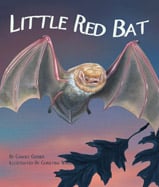Alignment to Standards for GA

| Grade | Number | Standard |
|---|---|---|
| 1 | S1CS3. | Students will use tools and instruments for observing, measuring, and manipulating objects in scientific activities. |
| 1 | S1CS4. c | Compare very different sizes, weights, ages (baby/adult), and speeds (fast/slow) of both human made and natural things. |
| 1 | S1E1. c | Correlate weather data (temperature, precipitation, sky conditions, and weather events) to seasonal changes. |
| 1 | S1L1. d. | Compare and describe various animalsãappearance, motion, growth, basic needs. |
| 2 | S2CS3. | Students will use tools and instruments for observing, measuring, and manipulating objects in scientific activities. |
| 2 | S2E3. a. | effects that occur in a specific area caused by weather, plants, animals, and/or people. |
| 2 | S2L1. | Students will investigate the life cycles of different living organisms. |
| 2 | S2L1. a. | Determine the sequence of the life cycle of common animals in your area: a mammal such as a cat or dog or classroom pet, a bird such as a chicken, an amphibian such as a frog, and an insect such as a butterfly. |
| 2 | S2L1. b. | Relate seasonal changes to observations of how a tree changes throughout a school year. |
| 3 | S3CS3. | Students will use tools and instruments for observing, measuring, and manipulating objects in scientific activities |
| 4 | S4CS4. c. | Identify patterns of change in thingsãusing records, tables, or graphs of measurements where appropriate. Sunrise/moonrise/tide tables (online teaching activities) |
| 4 | S4L2. | identify factors that affect the survival or extinction of organisms such as adaptation, variation of behaviors (hibernation), and external features (camouflage and protection). |
| 4 | S4L2. a. | Identify external features of organisms that allow them to survive or reproduce better than organisms that do not have these features (for example: camouflage, use of hibernation, protection, etc.). |
| 5 | S5CS4. c. | Identify patterns of change in thingsãusing records, tables, or graphs of measurements where appropriate. Sunrise/moonrise/tide tables (online teaching activities) |
| 5 | S5L2. | Students will recognize that offspring can resemble parents in inherited traits and learned behaviors. |
| 5 | S5L2. a. | Compare and contrast the characteristics of learned behaviors and of inherited traits. |
| K | SKCS3. | Students will use tools and instruments for observing, measuring, and manipulating objects in scientific activities. |
| K | SKCS5.A | Describe and compare things in terms of number, shape, texture, size, weight, color, and motion. |
| K | SKE1. | Students will describe time patterns (such as day to night and night to day) and objects (such as sun, moon, stars) in the day and night sky. |
| K | SKL1. b | Group animals according to their observable features such as appearance, size, motion, where it lives, etc. (Example: A green frog has four legs and hops. A rabbit also hops.) |
| K | SKL2. | Students will compare the similarities and differences in groups of organisms. |
| K | SKL2. a | Explain the similarities and differences in animals. (color, size, appearance, etc.) |
| K | SKL2. c | Recognize the similarities and differences between a parent and a baby. |